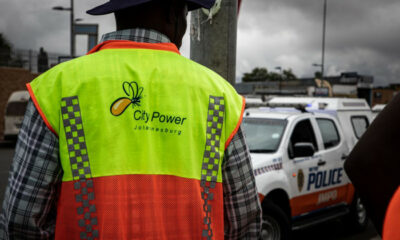News
Suspension on U.S.–SA Tariffs: A Fragile Lifeline as July Deadline Looms

With July 9 fast approaching, South Africa is making a last-minute plea to the U.S. government: please don’t hike the tariffs on our exports just yet—even if there isn’t a final deal.
From Liberation Day Tariffs to Temp Relief
Back on 2 April, former President Trump slapped “Liberation Day” tariffs on major trading partners, levying 30% duties on imports into the U.S. South Africa was hit hard. A week later, the U.S. scaled it down to a 10% base rate—but only for 90 days, ostensibly to let negotiations happen.
But that deal comes with complications: the U.S. is still enforcing sweeping 25% Section 232 tariffs on South African steel, aluminium, and automotive exports.
Time Running Out, Risks Amplifying
On 11 June, Minister Parks Tau told Parliament that nothing is certain when the pause ends on 9 July. Businesses remain vulnerable to a sudden 30% tariff shock, a move that could slam exports and derail investment.
Ambassador Xolelwa Mlumbi‑Peter emphasized that talks won’t wrap up by then. South Africa is asking the U.S. to maintain tariffs at 10% until they do—without forcing exporters into uncertainty. Crucially, they also want AGOA privileges and most-favoured-nation duties to continue unbroken.
A Deal Beyond Tariffs: Regional Gains in Play
Behind the scenes, Pretoria is pushing a broader trade framework with Washington. Draft proposals include:
-
U.S. investment in South African gas and energy infrastructure
-
Bilateral trade in beef, citrus, avocados, poultry, and pork
-
Collaboration in critical minerals and digital trade initiatives
Tau highlighted the scale of the relationship: in 2024, South Africa exported nearly $15 billion in goods to the U.S. but imported just $5.8 billion . Services trade also favors America. So, while the relationship is skewed, it’s vital to both economies.
Farmers & Exporters Feeling the Heat
On social media and among industry groups, the tension is palpable. Macadamia farmers a sector heavily reliant on U.S. markets—are already diversifying, courting buyers in India and elsewhere. Citrus growers warn job losses could hit 35,000 if tariffs return to 30%. That’s not just numbers it’s livelihoods.
Business confidence took a hit too. A recent RMB‑BER survey shows investor sentiment dropped to 40 points in Q2 from 45, citing trade uncertainty and domestic bottlenecks
Why It Matters
If tariffs snap back to 30%, it could stall South Africa’s fragile economic recovery. Gauteng-based exporters, in particular, would struggle pushing up costs, shrinking markets, and cutting jobs.
It’s more than money it’s about protecting progress. With inflation and jobs already under strain, exporters and farmers need a stable runway to plan ahead.
What’s Next
As the July 9 deadline nears, all eyes are on Washington. South African negotiators are hoping the U.S. will agree to roll over the 10% rate until a framework is locked in, especially one that keeps AGOA preferences intact.
Whatever emerges, one thing’s clear: for days now, South Africa has been sitting on a trading tightrope. Without clarity, farmers, investors, and consumers remain on edge.
{Source: Engineering News}
Follow Joburg ETC on Facebook, Twitter , TikTok and Instagram
For more News in Johannesburg, visit joburgetc.com


























